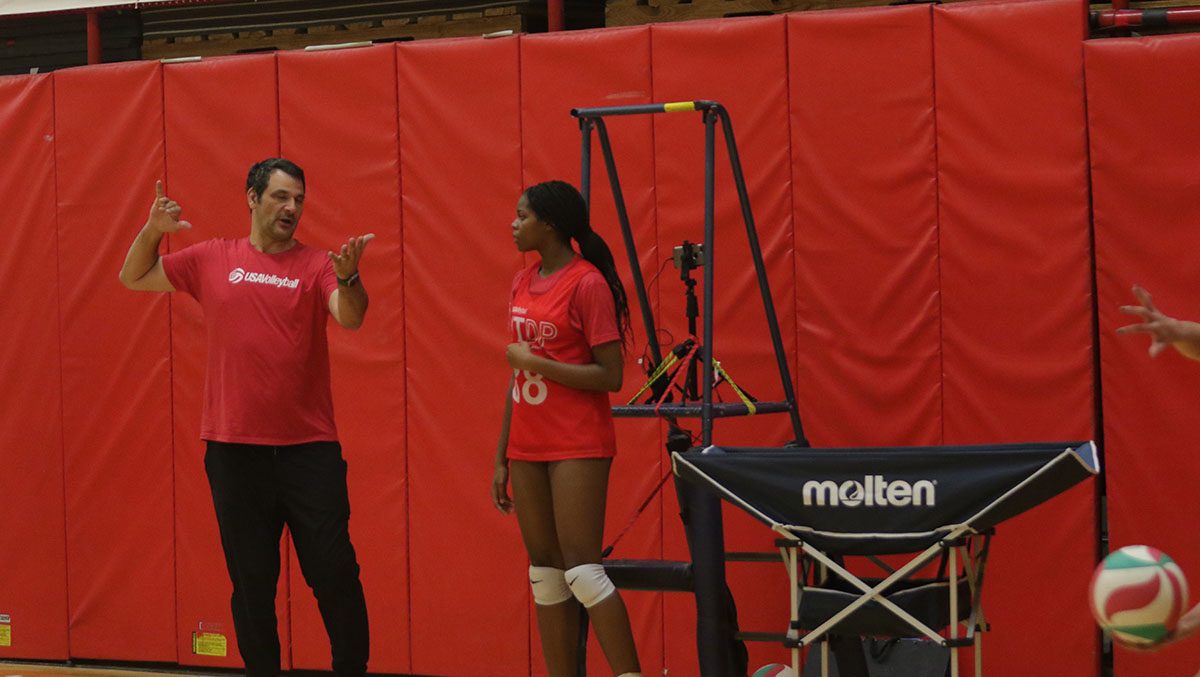
As a coach, you play a large role in your athletes’ lives, and helping them set realistic, meaningful goals as a team and as individuals is one of the most important parts of a successful season. While athletes should feel ownership over both individual and team goals, you can help them optimize those goals so that their wellbeing, rather than winning, is prioritized.
Here are some simple steps to help your athletes set goals that matter.
Understand how athletes are feeling
As a coach, it’s easy to focus on goals that matter to you and your program. But before you start setting goals, think about what matters to your athletes. Take a moment to consider how they are feeling and what other pressures they may be dealing with. Pressures come at young athletes from all directions, including parents who want them to get that athletic scholarship, school administrators who are trying to improve school rankings, and teammates who want to win. Amidst this pressure, make sure you’re initiating conversations about what the athlete wants and what matters to them.
Set goals that focus on athlete wellness
Athletic goals shouldn’t just revolve around national championships or state titles. While it can be fun to have some goals that are based on specific outcomes, like making it to the championships, it’s equally important to have goals that are focused on process, development, and wellness. For example, you can help them set process goals for practices, set a team goal of getting 8 to 10 hours of sleep every night, and create goals around creating an inclusive and healthy team culture.
Set goals for the team as a team
As the coach, you likely have certain hopes for the season, and it’s tempting to show up to the first practice of the season proposing those goals for the team. But instead of presenting your list of goals, try a goal-setting exercise with athletes. By allowing your athletes to set the goals for the team this season, you’re giving them ownership and making them more emotionally connected to the outcomes. And this approach works in the team’s favor: The Association for Applied Sports Psychology points out that when athletes set their own goals, they’re more likely to achieve them.
Help athletes set goals as individuals
While team goals are important, each athlete should also feel as though they have their own set of independent goals that align with their values. These personal goals may feed into the overarching team goal, but more importantly, they should focus on what matters to the athlete and what’s within their control. Make sure individual goals are challenging but realistic, while also keeping the athlete’s wellness at the forefront. Process goals are a great way to find this balance. For example, a swimmer might set process goals around improving their kick turns or a certain stroke. With both individual and team goals, it’s also important to make time to reflect on progress and adjust goals to reflect changing circumstances.
Remember athletes will have different needs
While it’s easy to think of your team as a singular entity, remember that each athlete will have different styles of learning and different needs and abilities. Some athletes will require extra help and attention to meet process goals, while others will do better with minimal involvement from you. Be aware that some goals will highlight inequities on the team. For example, some athletes may struggle to meet goals like adding in extra gym sessions because they’re busy working a part time job, so goals and expectations should account for those different circumstances. Encourage athletes to let you know what they need in order to thrive and achieve these goals—or when they need to tweak the goals that are set.
Takeaway
As a coach, you have the ability to help each athlete on your team set goals for the season that establish a positive team culture and help them develop as healthy, happy people. To set goals that matter, let athletes know that you actually care about them and their personal goals, set goals for the team with the team, and focus on process goals that promote overall wellness.
About TrueSport
TrueSport®, a movement powered by the experience and values of the U.S. Anti-Doping Agency, champions the positive values and life lessons learned through youth sport. TrueSport inspires athletes, coaches, parents, and administrators to change the culture of youth sport through active engagement and thoughtful curriculum based on cornerstone lessons of sportsmanship, character-building, and clean and healthy performance, while also creating leaders across communities through sport. For more expert-driven articles and materials, visit TrueSport’s comprehensive collection of resources.
This content was reproduced in partnership with TrueSport. Any content copied or reproduced without TrueSport and the U.S. Anti-Doping Agency’s express written permission would be in violation of our copyright, and subject to legal recourse. To learn more or request permission to reproduce content, click here.
